Related Research Articles

The Great Pyramid of Giza is the largest Egyptian pyramid. It served as the tomb of pharaoh Khufu, who ruled during the Fourth Dynasty of the Old Kingdom. Built c. 2600 BC, over a period of about 26 years, the pyramid is the oldest of the Seven Wonders of the Ancient World, and the only wonder that has remained largely intact. It is the most famous monument of the Giza pyramid complex, which is part of the UNESCO World Heritage Site "Memphis and its Necropolis". It is situated at the northeastern end of the line of the three main pyramids at Giza.
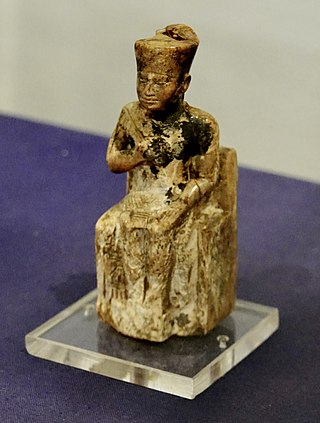
Khufu or Cheops was an ancient Egyptian monarch who was the second pharaoh of the Fourth Dynasty, in the first half of the Old Kingdom period. Khufu succeeded his father Sneferu as king. He is generally accepted as having commissioned the Great Pyramid of Giza, one of the Seven Wonders of the Ancient World, but many other aspects of his reign are poorly documented.

The Great Sphinx of Giza is a limestone statue of a reclining sphinx, a mythical creature with the head of a human and the body of a lion. Facing directly from west to east, it stands on the Giza Plateau on the west bank of the Nile in Giza, Egypt. The face of the Sphinx appears to represent the pharaoh Khafre. The original shape of the Sphinx was cut from bedrock, and has since been restored with layers of limestone blocks. It measures 73 m (240 ft) long from paw to tail, 20 m (66 ft) high from the base to the top of the head and 19 m (62 ft) wide at its rear haunches.

The pyramid of Khafre or of Chephren is the middle of the three Ancient Egyptian Pyramids of Giza, the second tallest and second largest of the group. It is the only pyramid out of the three that still has cladding at the top. It is the tomb of the Fourth-Dynasty Pharaoh Khafre (Chefren), who ruled c. 2558−2532 BC.

The Giza pyramid complex in Egypt is home to the Great Pyramid, the Pyramid of Khafre, and the Pyramid of Menkaure, along with their associated pyramid complexes and the Great Sphinx. All were built during the Fourth Dynasty of the Old Kingdom of ancient Egypt, between c. 2600 – c. 2500 BC. The site also includes several temples, cemeteries, and the remains of a workers' village.

Pyramidology refers to various religious or pseudoscientific speculations regarding pyramids, most often the Giza pyramid complex and the Great Pyramid of Giza in Egypt. Some "pyramidologists" also concern themselves with the monumental structures of pre-Columbian America, and the temples of Southeast Asia.

George Andrew Reisner Jr. was an American archeologist of Ancient Egypt, Nubia and Palestine.
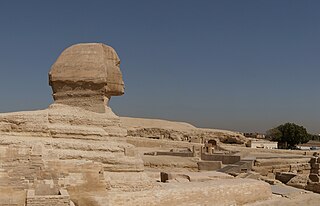
The Hall of Records is a purported ancient library that is claimed to exist underground near the Great Sphinx of Giza in Egypt. The concept originated with claims made by Edgar Cayce, an American who claimed to be clairvoyant and was a forerunner of the New Age movement. He said in the 1930s that refugees from Atlantis built the Hall of Records at Giza to preserve their knowledge. Cayce's assertions had many precursors, particularly the pseudohistorical theories about Atlantis that Ignatius Donnelly promulgated in the late 19th century, as well as claims about hidden passages at Giza that date back to medieval times.

The Khufu ship is an intact full-size solar barque from ancient Egypt. It was sealed into a pit alongside the Great Pyramid of pharaoh Khufu around 2500 BC, during the Fourth Dynasty of the ancient Egyptian Old Kingdom. Like other buried Ancient Egyptian ships, it was part of the extensive grave goods intended for use in the afterlife. The Khufu ship is one of the oldest, largest, best preserved vessels from antiquity. It is 43.4 metres (142 ft) long, 5.9 metres (19 ft) wide, and 1.78 meters deep, and is the world's oldest intact ship. It has been described as "a masterpiece of woodcraft" that could sail today if put into a lake or a river.
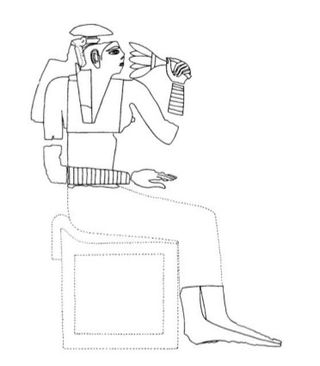
Hetepheres I was a queen of Egypt during the Fourth Dynasty of Egypt who was a wife of one king, the mother of the next king, the grandmother of two more kings, and the figure who tied together two dynasties.
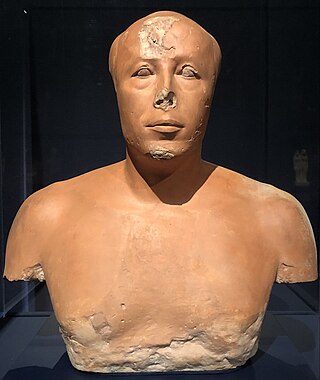
Ankhhaf was an Egyptian prince and served as an overseer during the reign of the Pharaoh Khufu, who is thought to have been Ankhhaf's half-brother. One of Ankhaf's titles is also as a vizier, but it is unknown under which pharaoh he would have held this title. He lived during Egypt's 4th Dynasty.
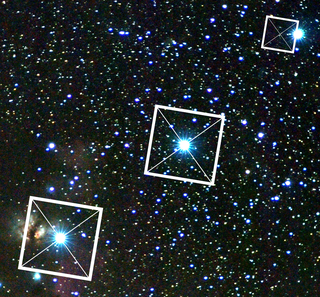
The Orion correlation theory is a fringe theory in Egyptology attempting to explain the arrangement of the Giza pyramid complex.
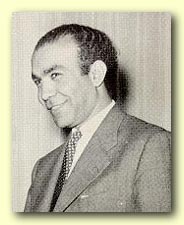
Kamal el-Mallakh was a famous Egyptian archaeologist who was among the Egyptian antiquities inspectors who discovered the King Khufu Solar ship in 1954.
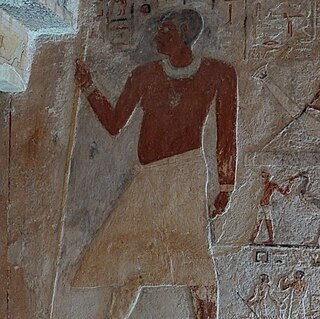
Kawab is the name of an ancient Egyptian prince of the 4th Dynasty. He was the eldest son of King Khufu and Queen Meritites I. Kawab served as vizier and was buried in the double mastaba G 7110–7120 in the east field which is part of the Giza Necropolis.
Persenet was an ancient Egyptian queen consort of the 4th Dynasty. She may have been a daughter of Pharaoh Khufu and a wife of Pharaoh Khafre. She is mainly known from her tomb at Giza.
The Djedi Project was an exploration of the interior of the Great Pyramid of Giza. The project team was made up of international and Egyptian experts. The name derived from Djedi, the ancient Egyptian magician consulted by Pharaoh Khufu when planning his famous pyramid. As Dr. Zahi Hawass announced on his blog: "The purpose of this project is to send a robotic tunnel explorer into the two "air shafts" that lead from the Queen's Chamber of the Great Pyramid of Khufu to gather evidence to determine the purpose of the shafts."

Several ancient Egyptian solar ships and boat pits were found in many ancient Egyptian sites. The most famous is the Khufu ship, which is now preserved in the Grand Egyptian Museum. The full-sized ships or boats were buried near ancient Egyptian pyramids or temples at many sites. The history and function of the ships are not precisely known. They are most commonly created as a "solar barge", a ritual vessel to carry the resurrected king with the sun god Ra across the heavens. This is a common theme in the Pyramid Texts, and these buried boats might be a real-life equivalent of solar barges. Similarly, another explanation behind these boats is that they were built for past kings to carry them to the afterlife. Because of these ships' association with the sun, they are often found in an east-west orientation in order to follow the path of the sun.

"Star shafts", or sometimes "air shafts", commonly refers to two narrow ducts leading out of the King's Chamber of the Great Pyramid of Giza. It may also refer to two similar shafts in the walls of the Queen's Chamber, though these are discussed less frequently due to being blocked off on both the outside and inside of the pyramid.

Seshemnefer (III)"Ṡshm-nfr" (fl. c. 2450 BC) was vizier, during the era of King Nyuserre Ini, ruler of the 5th dynasty. He was the third generation in the family line and had his own tomb, G 5170 on the west side of Khufu's pyramid. Information about his life and family has been drawn from the decoration in his tomb and the documented history of his ancestors too.

The tomb of Hetepheres I is an Ancient Egyptian shaft tomb at Giza. It is part of the Eastern Cemetery of the Great Pyramid of Giza and is located near the northeast corner of the northern pyramid of Queen G I-a. The Egyptian queen Hetepheres I was the mother of Khufu and probably the wife of Sneferu.
References
- 1 2 The Upuaut Project: New Findings in the Southern Shaft of the Queen's Chamber in Cheops Pyramid
- 1 2 What Lies at the End of the Queen's Chamber Shafts?
- ↑ Episode #085: The Upuaut Project
- ↑ Cheop's Pyramid: A New Dating Using the Latest Astronomical Data
- ↑ Explaining the Shafts in Khufu's Pyramid at Giza
- ↑ Robotic Indiana Jones to penetrate pyramid
- ↑ Robot Enters Great Pyramid in Egypt
- ↑ Blog of Archived 2014-11-03 at the Wayback Machine dr. Zahi Hawass
- ↑ The Djedi Project Part 1
- ↑ The Djedi Project Part 2
- ↑ The Djedi Project Part 3